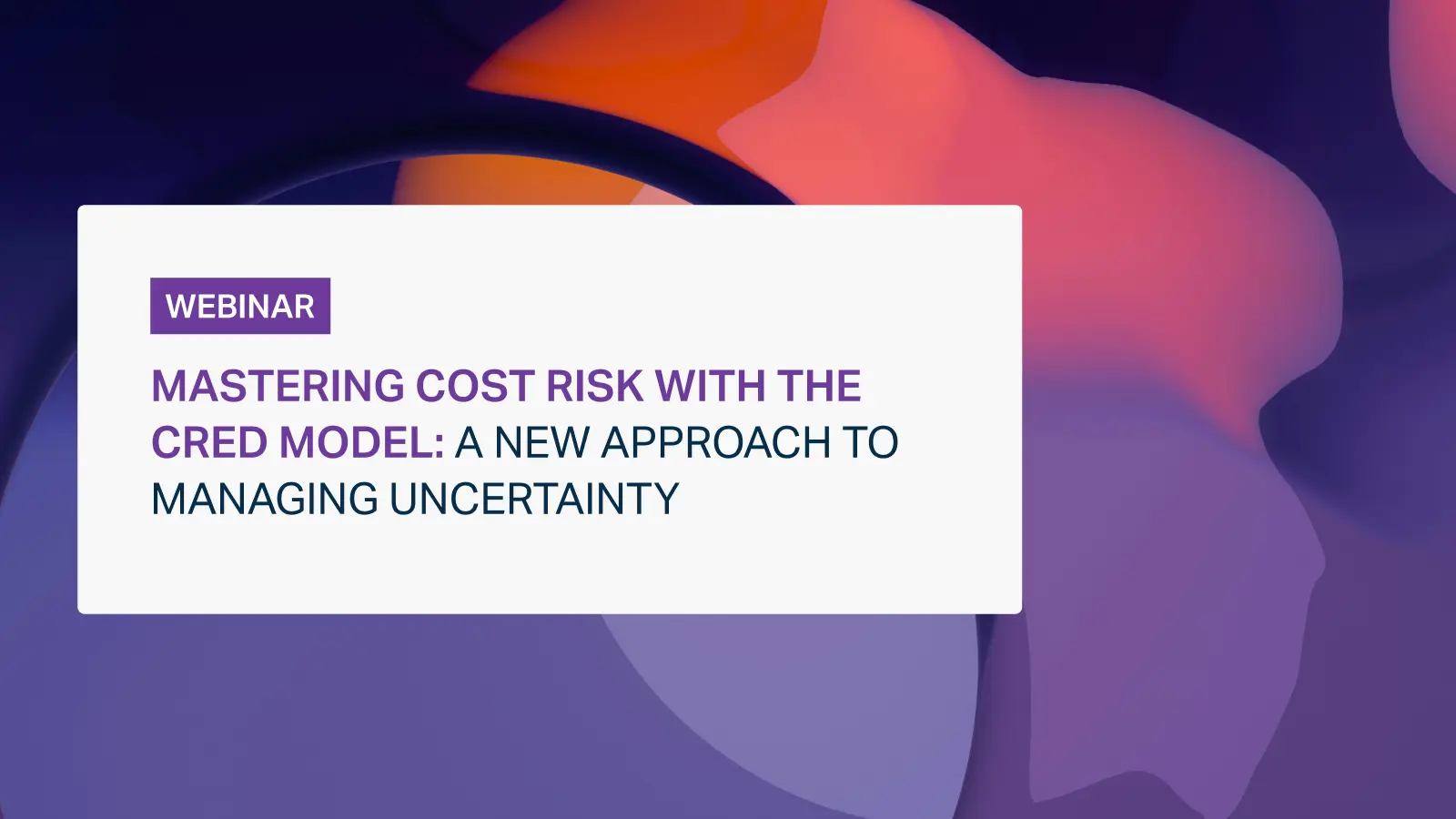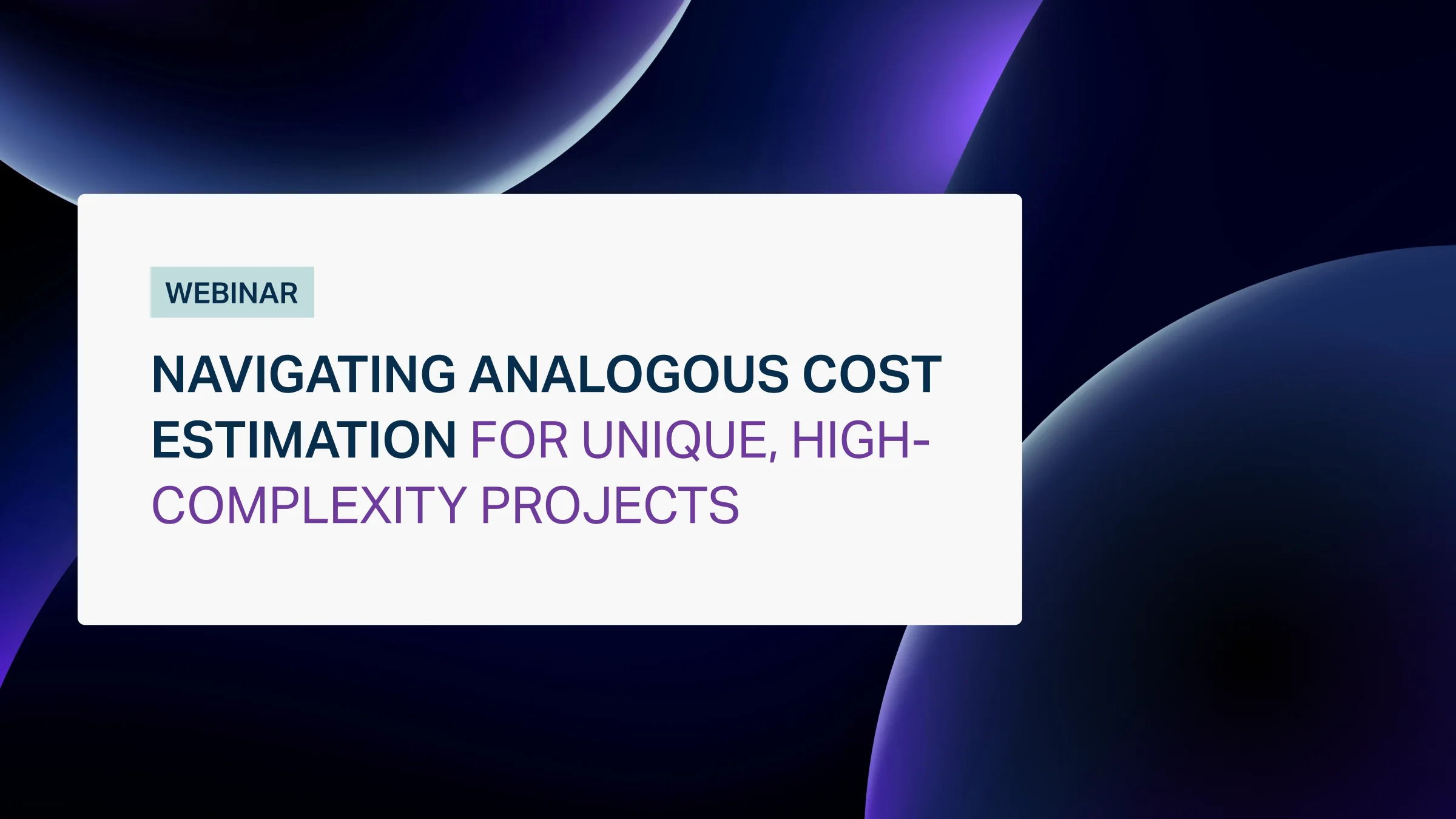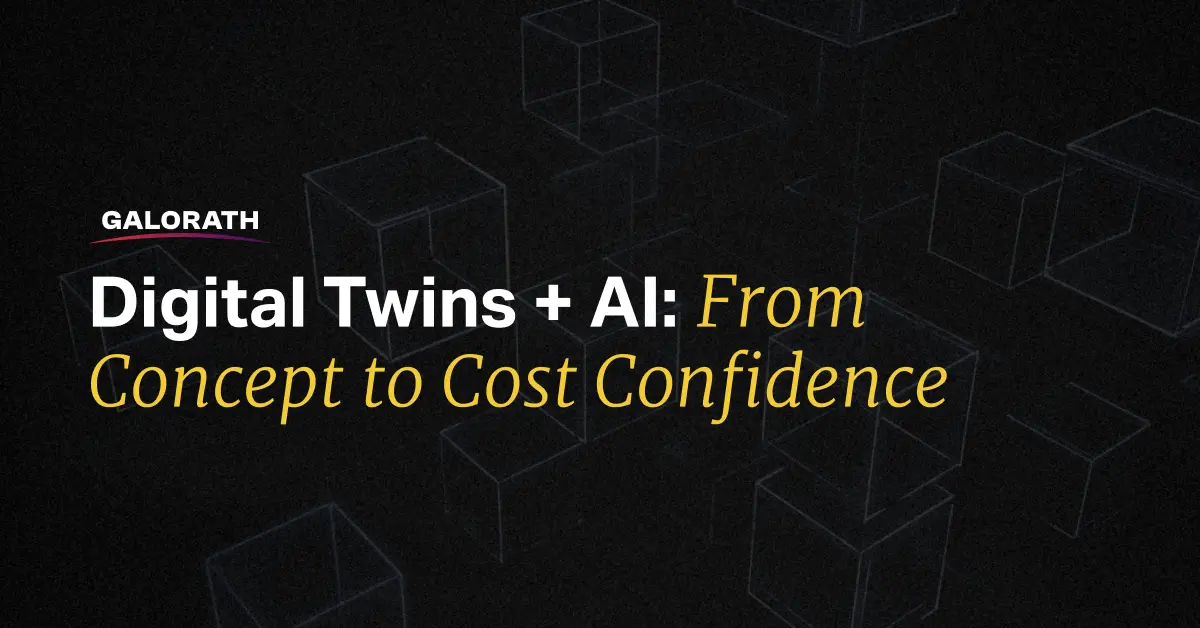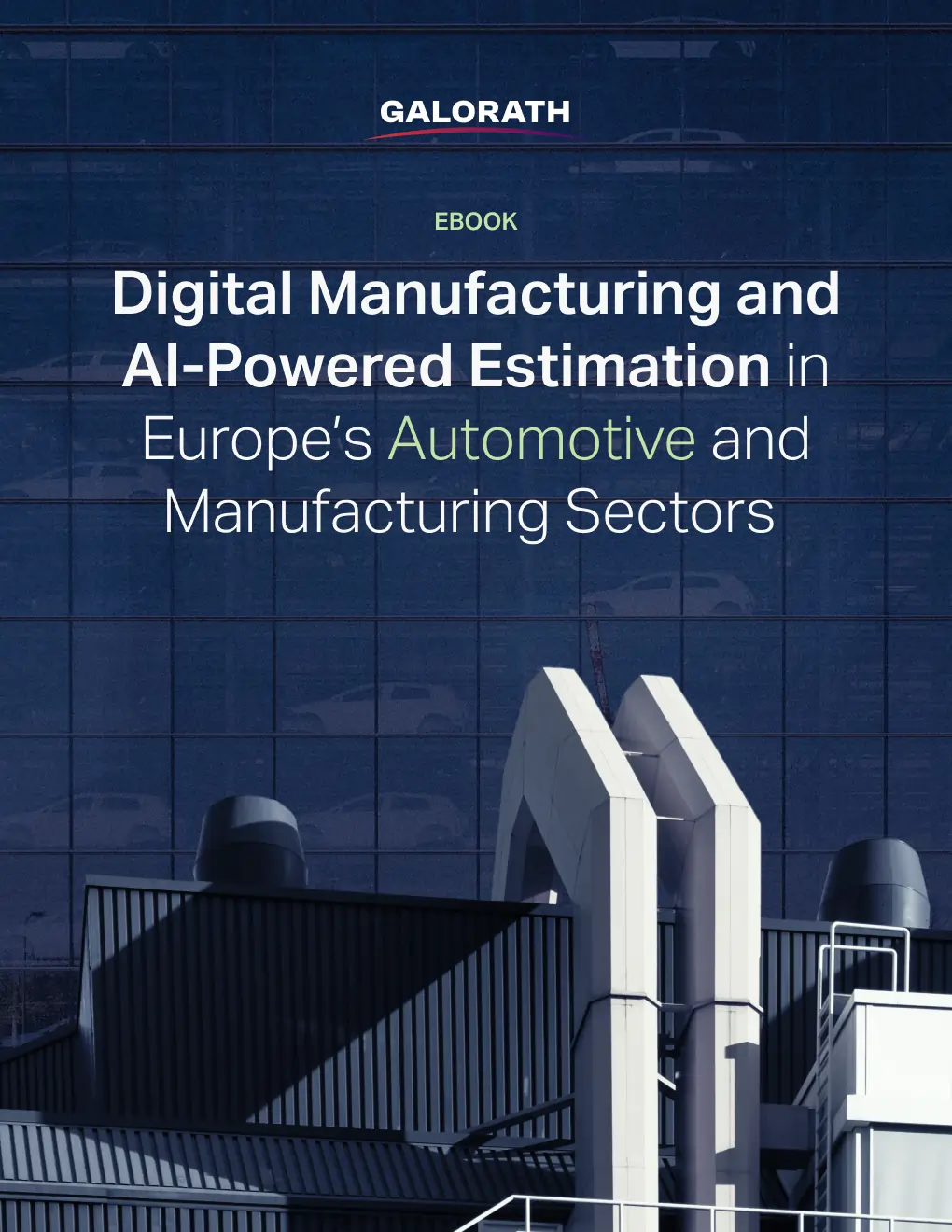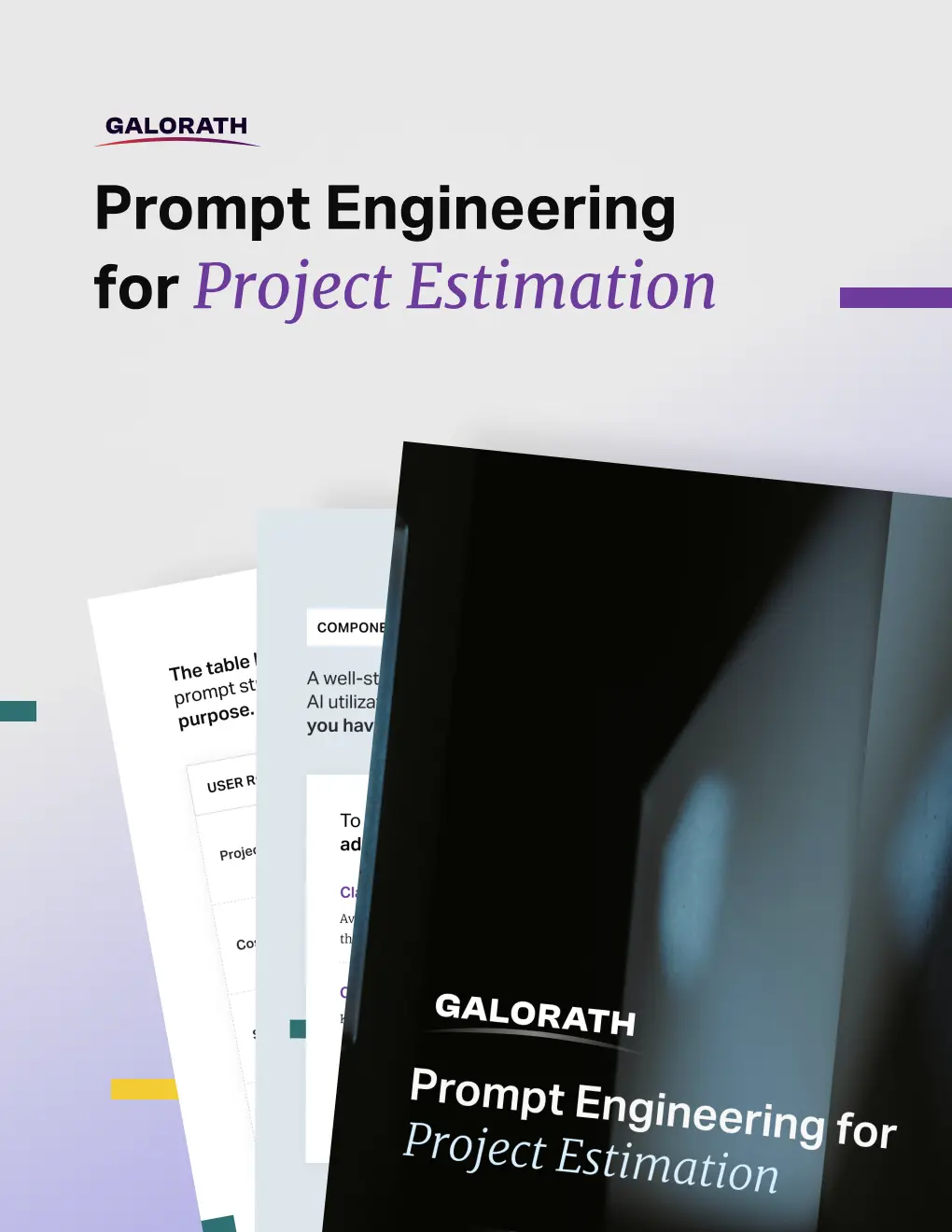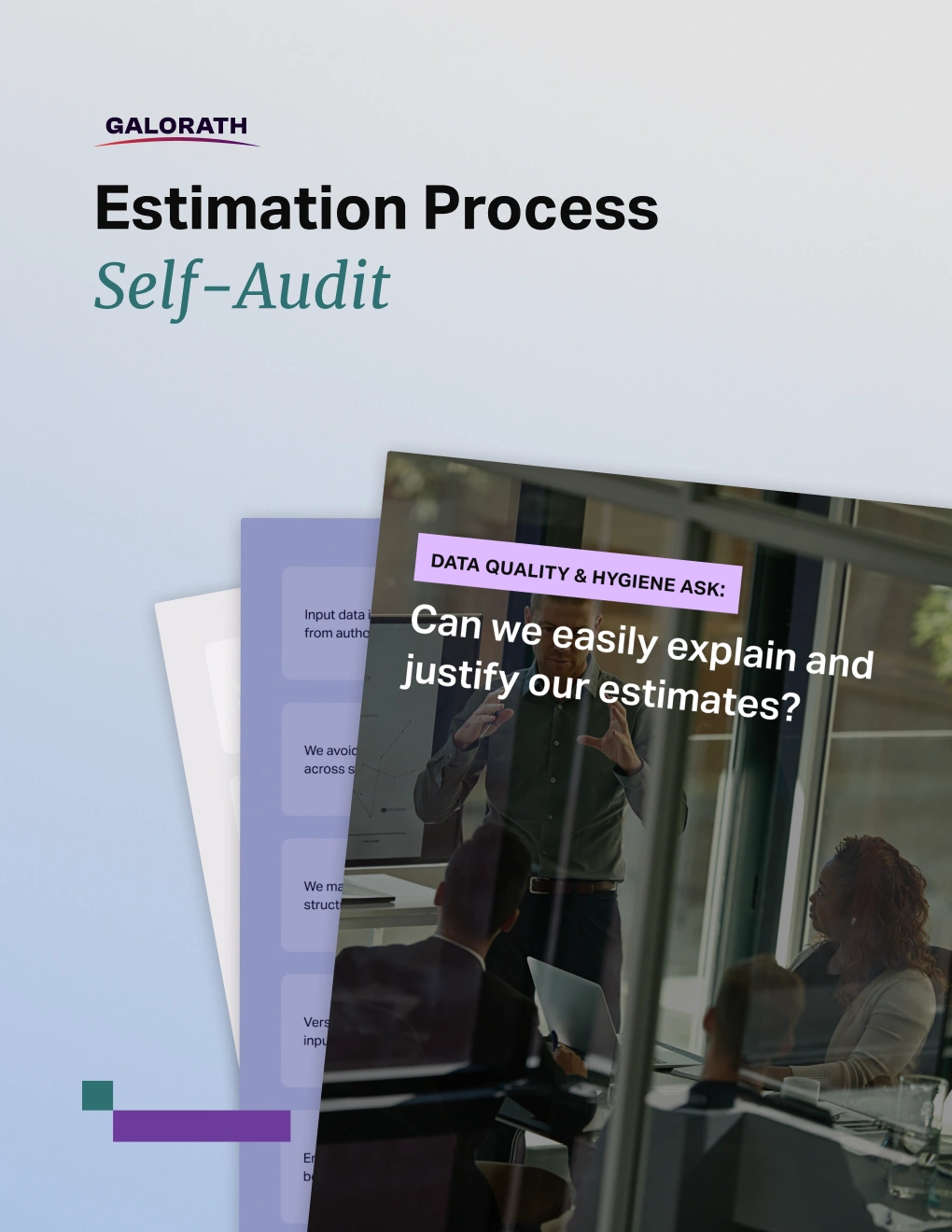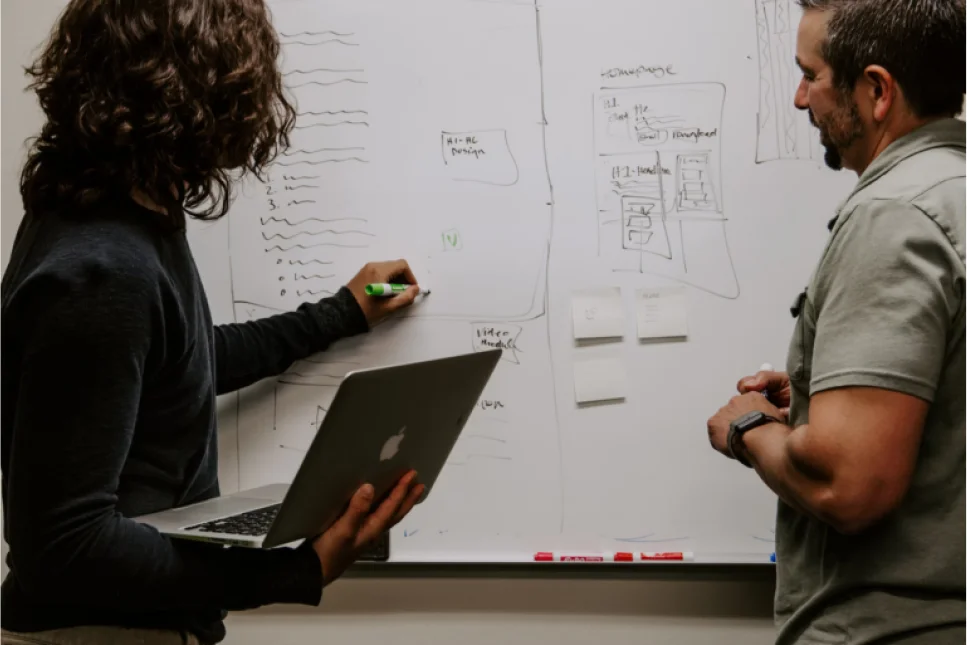Mastering Cost Risk with the CRED Model: A New Approach to Managing Uncertainty

By Matt McDonald, President, Galorath Federal Inc.
Table of Contents
Businesses—whether service providers or manufacturers—are constantly under pressure in today’s world. They need to efficiently bid, manage, and monitor costs, schedules, and risks. Many companies are focused on crafting accurate and compelling proposals or managing internal budgets, but they often overlook one valuable asset: their historical data. By failing to leverage past project information, like requirements, costs, and productivity, organizations miss key opportunities to enhance accuracy and reduce risk.
I recently spoke with a Senior Manager at a large consulting firm about improving performance using historical data. The Senior Manager admitted that they were not collecting this information in a standardized way and were not measuring delivery performance. This untapped resource could significantly improve project outcomes, yet many companies fail to use it effectively.
Addressing the Data Challenge
Many organizations, including the one I spoke with, struggle with inconsistent or fragmented data practices. Without a structured process to collect vital program data—which is often the foundation for accurate cost estimates—companies rely on assumptions. This leads to inaccurate bids, budget overruns, and missed opportunities for project optimization.
At Galorath, we’ve seen these challenges across various industries and public sector organizations. Companies lose valuable insights into cost drivers, trends, and risks without reflecting on past performance. When I see this, I think of Edward Deming, who said, “If you can’t describe what you are doing as a process, you don’t know what you are doing.”
Closing the Data Gap: Steps for More Accurate Cost Estimates
Organizations must adopt a deliberate, structured process to close the gap in their data practices and make better, data-driven decisions. Here are a few key steps to help guide this transformation:
- Audit Current Data Practices: Evaluate how your organization collects, stores, and accesses historical data. If I were to advise the Senior Manager from my earlier conversation, I’d begin by asking a few discovery questions: Are bid data and project costs scattered across departments? Is completed project cost data accessible and usable for future estimates? Does the company have a repository for its historical data? Identifying these gaps is the first step toward improving data management.
- Consolidate Historical Data: Centralizing critical data from past bids, project outcomes, and performance metrics is crucial. By bringing everything into a unified platform, your historical data becomes a powerful tool for future bids and strategic decisions. Avoid static tools like Excel and consider scalable platforms for querying and categorizing data. We help clients switch to a more flexible database system like SQL, dramatically improving their data compatibility and accessibility.
- Standardize Data Collection: I advised the Senior Manager to create processes that standardize data collection across projects. By establishing consistent methods and categories, they could better use the data for cost estimation. We had a similar case with a Federal organization, where we deployed best practices, including standardizing cost data and removing outliers. This ensured more accurate analysis and made identifying trends, risks, and key cost drivers easier.
- Leverage Past Performance: Using the abovementioned steps, the Senior Manager can use historical data to identify cost drivers and risks impacting past project outcomes. Based on this data, they can develop cost-estimating relationships (CERs) to create more realistic and defensible estimates, ultimately leading to better budget management and improved win rates.
- Develop a Continuous Feedback Loop: To sustain improvement, organizations need to commit to ongoing data refinement. I often recommend creating a Center of Excellence where all relevant stakeholders focus on continuous improvement. By implementing a feedback system where data from completed projects feeds into future estimates, companies can refine their models over time, increasing estimate accuracy and competitiveness in bids.
Real-World Success Stories: How Historical Data Transforms Performance
At Galorath, we’ve worked with multiple organizations to help them implement strategies that leverage historical data for more accurate program execution and data-driven decision-making. Here are a few examples:
- DoD Organization: We built a comprehensive cost database for the Army’s Wheeled and Tracked Vehicle (WTV) program. By analyzing cost, technical, and schedule data, the Army improved its ability to estimate future costs more accurately, which enhanced decision-making at all levels.
- DoD Software Sustainment Programs: We developed a historical database for defense organizations’ software operations and sustainment programs, including CERs and benchmarks. This allowed the Army to analyze sustainment patterns and key cost drivers, leading to better long-term cost management.
- Civilian Agency: A civilian agency struggled with a long-standing GAO finding regarding its lack of cost estimation management. Galorath helped establish a historical data repository and a retrospective process for projects. This allowed the agency to capture and analyze data from initial business case estimates, helping them resolve several audit issues.
These examples highlight how leveraging historical data can significantly improve cost accuracy and project outcomes, whether in the public or private sector.
Supporting Your Data-Driven Strategies with Tools
While having the right strategy is essential, the tools that support your data-driven approach are just as critical. At Galorath, we offer solutions like CostDB services and the SEER suite that can play a vital role in these efforts.
- CostDB Services: Our CostDB services help organizations assess their data readiness, update processes, centralize data, and normalize it. Companies can ensure efficient, scalable data management by turning fragmented data into actionable insights.
- SEER Suite: The SEER tools are designed to work with your historical data, helping you estimate costs across various domains—software, hardware, or manufacturing. These tools streamline estimation processes and enhance accuracy and consistency when combined with solid data practices.
Take Control of Your Estimation Process Today
Now is the time to take control of your cost estimation process. Start by auditing your data collection practices, centralizing your historical data, and using it to guide future bids. If fragmented data is holding your organization back, consider working with Galorath to implement a centralized platform that unlocks the full potential of your historical information.
Following these steps can bridge the gap between estimation and actual project performance, ultimately improving your company’s performance and project outcomes.
Are you ready to get started? Contact us today to learn how we can help you transform your data into a strategic asset that drives better business results.
10-Step Estimation Process Checklist
View our 10 Step Estimating Process Checklist. This checklist should be tuned to the individual company’s needs and suggestions.
Estimating Total Cost of Ownership (TCO)
Find out how you can use Total Cost of Ownership (TCO) model to create an estimate which includes all the costs generated over the useful life of a given application.
Should Cost Analysis
Learn how Should-Cost Analysis can identify savings opportunities and drive cost efficiency in procurement and manufacturing processes.
ROM Estimate: The First Step Towards a Detailed Project Plan
Find out what ROM (rough order of magnitude) estimate is and why is it a crucial element of every project planning cycle.
Software Maintenance Cost
Find out why accurate estimation of software maintenance costs is critical to proper project management, and how it can make up to roughly 75% of the TCO.
